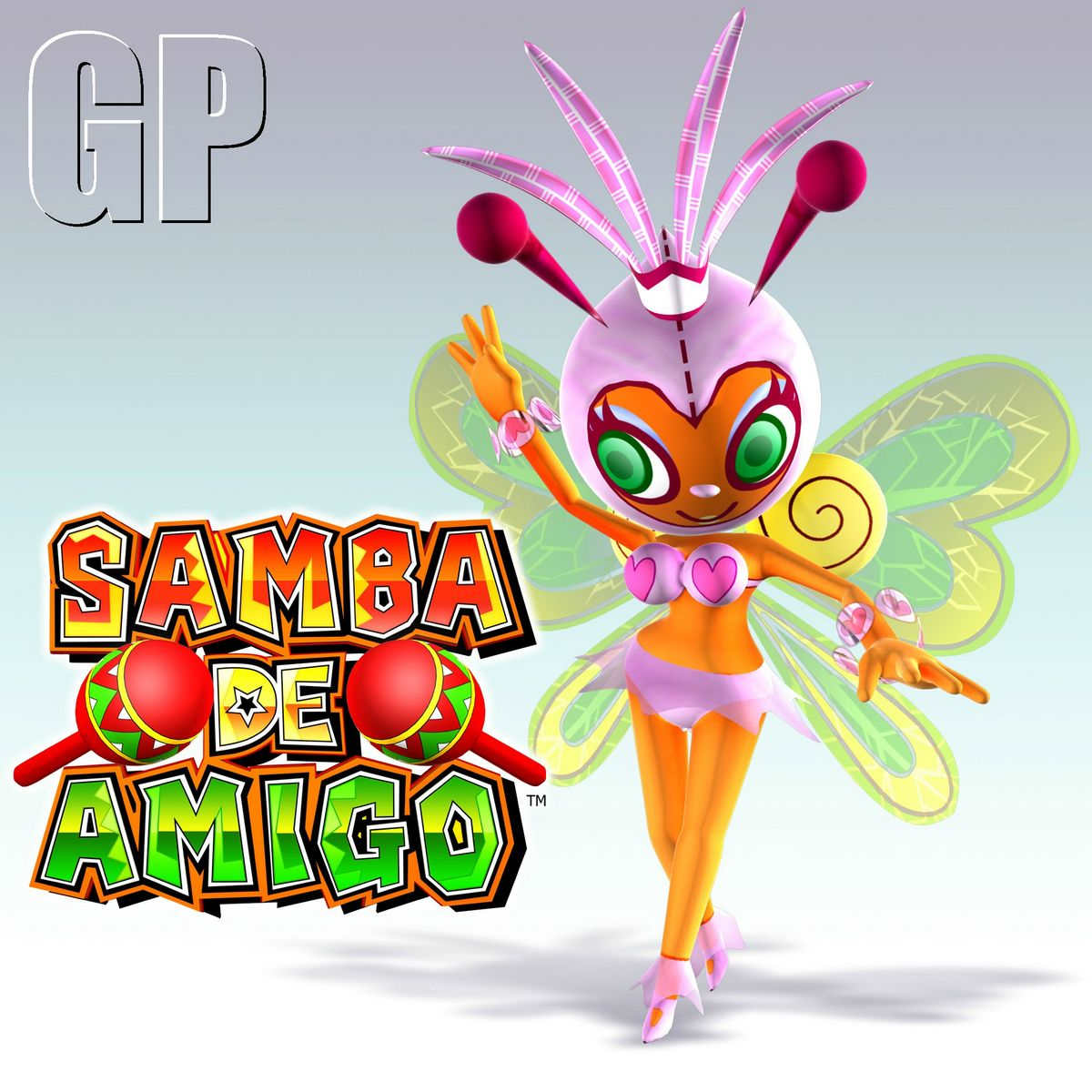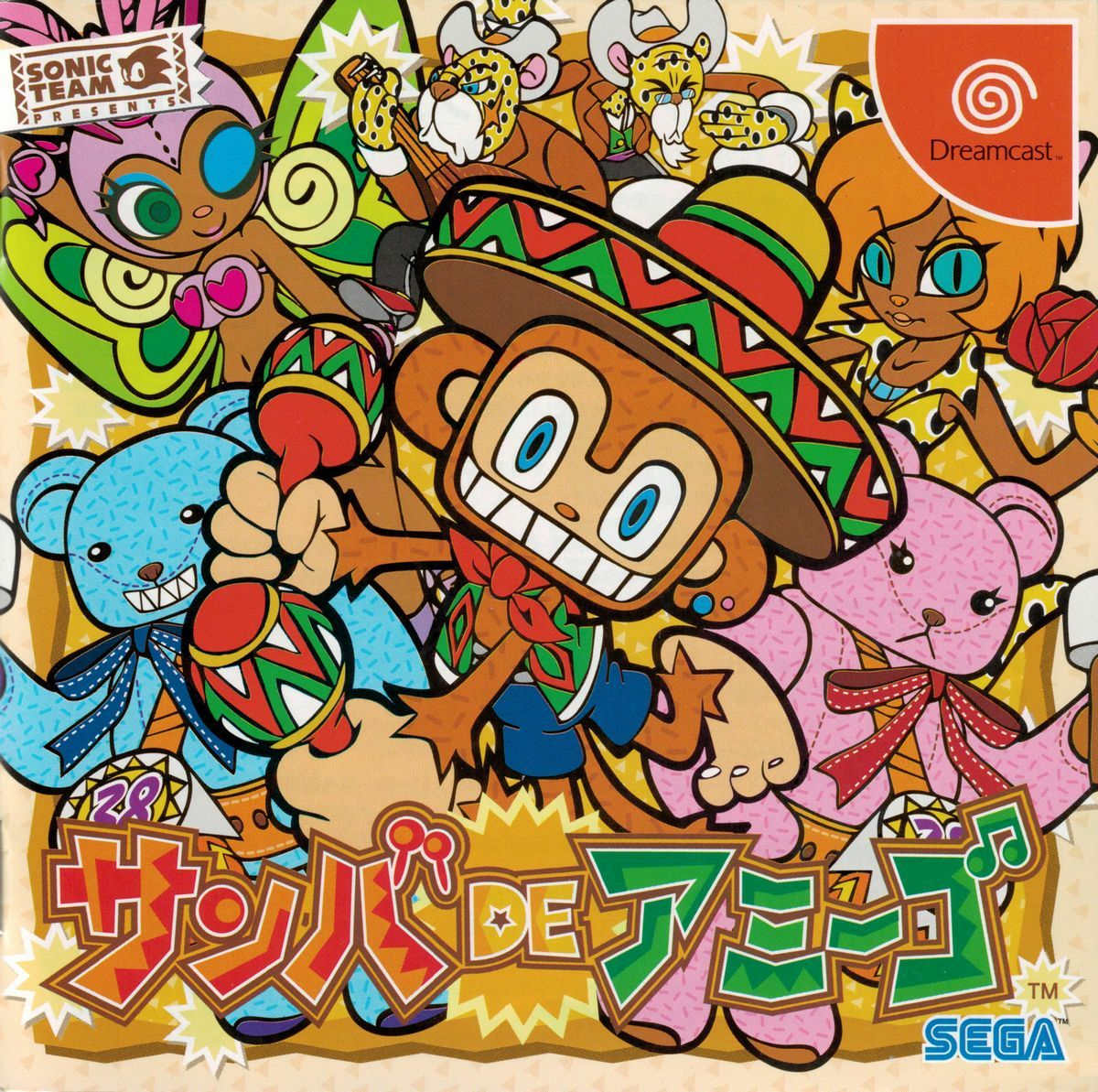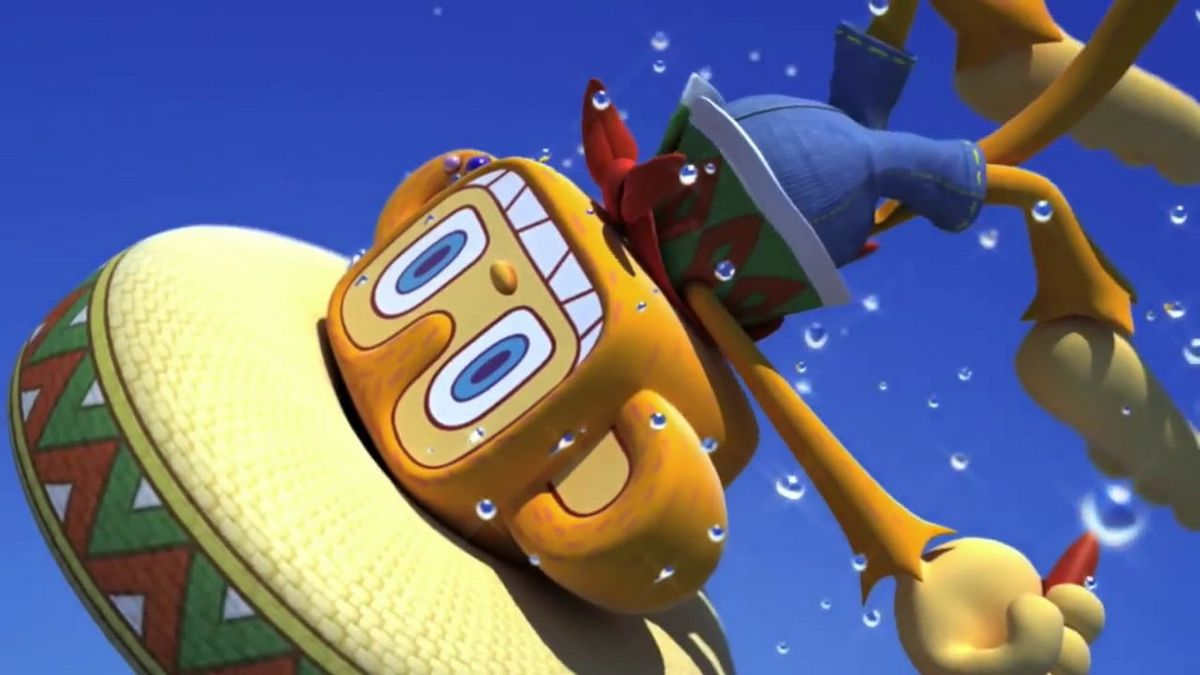Samba de Amigo is a rhythm-based video game that was introduced to the world in 1999. Developed by Sonic Team, Samba de Amigo has become one of the most popular and iconic games in the music genre. This innovative game combines traditional Brazilian samba music with interactive gameplay, creating a uniquely immersive experience for players.
The game uses specialized controllers shaped like maracas that allow players to mimic playing an instrument while dancing along to various rhythms. The controllers feature sensors that track movement and determine accuracy, making it possible for players to score points based on their timing and precision.
In addition, Samba de Amigo offers multiple modes of play including career mode, party mode, and multiplayer options. With over 40 different upbeat songs ranging from classic sambas to modern pop hits, this game has something for everyone.
As an expert on gaming culture and technology trends, I will delve deeper into the history of Samba de Amigo’s development process as well as explore its impact on the video gaming industry today. Join me as we discover how this rhythmic masterpiece continues to captivate audiences around the globe!
- The History and Evolution of Samba de Amigo: From Arcade to Home Console
- Understanding the Gameplay Mechanics and Controller Design of Samba de Amigo
- The Role of Music in Samba de Amigo: Analyzing the Game’s Soundtrack and Rhythmic Patterns
- Competitive Play in Samba de Amigo: Examining Tournaments, Scoring Systems, and Strategies for Success
- Cultural Significance of Samba de Amigo: How this Game Celebrates Brazil’s Rich Musical Heritage
The History and Evolution of Samba de Amigo: From Arcade to Home Console
The game features an array of colorful characters, including monkeys and maracas, dancing and shaking to various Latin American beats. Samba de Amigo’s unique gameplay involves the use of motion-sensitive controllers shaped like maracas which the player must shake in time with on-screen cues.
The game quickly gained popularity for its energetic music, eye-catching visuals, and intuitive controls. Sega released several iterations of the game for home consoles such as the Dreamcast and Wii over the years. These versions offered additional songs, new modes, and improved graphics compared to their arcade counterpart.
One of Samba de Amigo’s most notable contributions to gaming history is its innovative use of motion control technology before it became widely adopted by other games like Nintendo’s Wii Sports or Microsoft’s Kinect. Overall, Samba de Amigo remains a beloved classic among rhythm games fans due to its catchy soundtrack and joyful atmosphere that keeps players coming back for more even today.
Understanding the Gameplay Mechanics and Controller Design of Samba de Amigo
The gameplay mechanics are centered around a unique controller design which consists of two maracas, one for each hand. These controllers have motion sensors that track the player’s movements and translate them into onscreen actions.
The game features different modes such as single-player, multiplayer, and party mode where up to eight players can join in. The core gameplay involves shaking the maracas in specific directions or patterns corresponding to on-screen prompts. Players must keep time with upbeat Latin American rhythms while maintaining their accuracy and precision.
The controller design adds an element of physicality to the gameplay experience making it more immersive than traditional button-mashing games. It also increases replayability as players strive for high scores and perfect performances.
Overall, understanding the Gameplay Mechanics and Controller Design of Samba de Amigo is essential to fully appreciate this classic rhythm game. The use of intuitive motion-based controls combined with energetic music makes for an engaging experience suitable for all ages and skill levels.
The Role of Music in Samba de Amigo: Analyzing the Game’s Soundtrack and Rhythmic Patterns
The game’s soundtrack consists mainly of popular samba songs, and players are required to hit virtual notes in time with the rhythm using two maraca-shaped controllers.
The role of music in Samba de Amigo cannot be overstated. Not only does it provide an immersive gameplay experience, but it also serves as a valuable tool for teaching players about traditional Brazilian culture and music. The rhythmic patterns used in the game closely mimic those found in actual samba performances, allowing players to develop a deeper appreciation for this vibrant musical style.
One unique aspect of the game’s soundtrack is its use of both classic and contemporary samba tracks. This not only appeals to fans of traditional Brazilian music but also introduces new listeners to modern interpretations of the genre. Additionally, by including songs from various regions across Brazil, Samba de Amigo showcases the rich cultural diversity that exists within this country.

Overall, Samba de Amigo stands out among other music games due to its emphasis on authenticity and education. By immersing players in a realistic simulation of traditional Brazilian samba performances, it provides an engaging platform for experiencing new cultures through music.
Competitive Play in Samba de Amigo: Examining Tournaments, Scoring Systems, and Strategies for Success
The game’s mechanics involve using two motion-sensitive maracas to hit different colored notes that correspond to the rhythm of the music playing in the background. While it may seem like an easy and straightforward game, there are many intricacies involved when it comes to competitive play.
One of the most crucial components of Samba de Amigo’s competitive scene is tournaments. These events bring together players from all over the world to compete for prizes and bragging rights. Tournaments usually consist of several rounds with increasing difficulty levels, culminating in a final round to determine the winner. Players must have excellent hand-eye coordination, timing, and endurance if they hope to succeed at these high-stakes competitions.

Another critical aspect of competitive play in Samba de Amigo is scoring systems. Different modes within the game use various scoring methods such as combo multipliers or point values assigned based on note accuracy or timing precision. Successful players will need not only excellent reflexes but also a deep understanding of how these different scoring systems work so that they can maximize their scores during gameplay.
Finally, strategies for success are essential for anyone looking to excel at this game competitively. Experienced competitors suggest practicing frequently with both hands equally (to avoid any imbalances), learning how to keep combos going without missing notes (which earns points exponentially more valuable than individual hits), playing songs multiple times until mastering them fully before moving onto more challenging ones & analyzing one’s performance through video recordings or analytics software tools for identifying areas where they need improvement.

In conclusion, Competitive Play in Samba de Amigo involves much more than just hitting some colorful notes with plastic instruments – it requires dedication, strategy development skills learned by practice and analysis experience; successful competition here will mean paying attention not only towards your own gameplay but also keeping an eye on other player’s movements as well as being able adapt yourself according to gameplay situation. Those who can master these aspects of the game will undoubtedly find themselves at the top of competitive leaderboards and earning a reputation as some of the best Samba de Amigo players around!
Cultural Significance of Samba de Amigo: How this Game Celebrates Brazil’s Rich Musical Heritage
Samba, the genre of music that inspired this game, originated in Afro-Brazilian communities and symbolizes resilience and resistance against oppression. The vibrant rhythms, catchy melodies, and lively percussion instruments make samba music one of the most distinctive and recognizable sounds in the world.
The gameplay of Samba de Amigo perfectly captures the essence of samba by requiring players to shake maracas like a professional sambista to hit notes that move across the screen to match beat patterns. This creates an immersive experience for players who can feel they are partaking in authentic Brazilian culture while enjoying a fun video game. It also represents an opportunity for non-Brazilians to learn more about Brazil’s musical history as well as its contemporary pop culture.
Furthermore, Samba de Amigo features many iconic songs from popular Brazilian musicians such as Sergio Mendes, Carmen Miranda, and Banda Eva. These artists have played crucial roles in shaping Brazilian music throughout history during periods of social change or political upheaval by creating new genres or fusing different styles together into something unique yet wholly representative of their country’s identity.
In conclusion, Samba de Amigo not only provides people with hours of interactive entertainment but also serves as an educational tool through which individuals can learn about Brazil’s magnificent musical heritage while being engaged with exciting gameplay mechanics. Its inclusion on multiple consoles over the years underscores its continued relevance despite changes in technology since it was first introduced over two decades ago – proving that great games transcend generational gaps when they celebrate important aspects of a particular culture like those found within Brazil’s music scene!
In conclusion, Samba de Amigo is an iconic and revolutionary game that has left a lasting impact on the music gaming industry. Its unique blend of rhythm-based gameplay with motion controls provided players with an immersive experience that had not been seen before. The game’s popularity led to numerous sequels and adaptations, including a virtual reality version released in 2016.
From a technical standpoint, Samba de Amigo was ahead of its time. It utilized advanced technology such as ultrasonic sensors and infrared receivers to track the player’s movements accurately. Furthermore, the use of multiple controllers allowed for multiplayer gameplay, which added another layer of excitement to the already thrilling musical experience.
Samba de Amigo has also played a vital role in introducing Latin American music to audiences worldwide. The game’s soundtrack features authentic samba music from Brazil and other Latin American countries, contributing significantly to popularizing this genre outside its traditional boundaries.
In summary, Samba de Amigo remains one of the most innovative games ever made and continues to inspire developers today. Its impact on both the gaming industry and music culture cannot be overstated; it will always hold a special place in gamers’ hearts around the world.
Read More:- Experience the Ultimate Beat with Rhythm Heaven Megamix Game!.
- Master the Rhythms with Game Gitaroo Man: The Ultimate Music Adventure.
- Experience Epic Music and Gameplay with Theatrhythm Final Fantasy: Curtain Call – A Review.
- Unleash Your Rhythm in Elite Beat Agents – The Ultimate Music Game | 70 Characters.
- Bust A Groove 2: The Ultimate Dance Battle Game for Gamers!.
- Sing Your Heart Out with Karaoke Revolution Presents: American Idol Game – Perfect for Fans and Music Enthusiasts!.
- Unleash Your Inner Rockstar: Play Game Gitaroo Man Lives! on Multiple Platforms Now!.